WRF Simulations of Passive Tracer Transport from Biomass Burning in South America: Sensitivity to PBL Schemes
Abstract
Highlights
- This is a single-event case study from 15 to 20 August 2019 on Amazon smoke. Long-range transport to SE Brazil occurred when a persistent 2–4 km lofted layer coexisted for hours with a favorable 700–600 hPa projected flow, opening a corridor for outflow.
- There is a PBL sensitivity in this case. MYNN 2.5 best matched the observed arrival altitude and timing over MASP, YSU produced thicker yet delayed plumes, and BouLac showed intermittent pulses.
- There is a two-ingredient diagnostic from this case that can flag long-range smoke outflow risk for operations. The presence of a 2–4 km lofted layer together with favorable 700–600 hPa flow is reported.
- The evidence remains case-specific. Broader use needs multi-event and multi-season evaluation with additional validation datasets.
Abstract
1. Introduction
2. Materials and Methods
2.1. Description of Event
2.2. Model Setup
Trajectory Analysis with HYSPLIT
2.3. PBL Schemes
2.3.1. Model Modifications
2.3.2. Passive Tracer’s Position Using FIRMS Data
3. Results
3.1. Synoptic Conditions During the Event
3.2. Daily Transport of Tracers
3.3. HYSPLIT Analysis
3.4. Cross-Section Analysis
3.5. PBL Characteristics
- The mean wind at 700–600 hPa projected onto the axis ().
- The vertical moments of the lofted fraction above the PBL (zcm± 1).
4. Discussion
- Coupling between the left exit of the polar jet (250 hPa) and low-level jet convergence over the La Plata Basin (“baroclinic efficiency”);
- A negatively tilted trough (NW–SE) with frontal advancement;
- Occlusion phase with zonal blocking in the South Pacific;
- A quasi-stationary front along the southeastern coast with a residual LLJ at 850 hPa to the north, composing an “S-shaped corridor.”
- Repeating the analysis across a multi-event sample (ASON) to quantify seasonal robustness and synoptic conditions;
- Coupling WRF-Chem, testing emissions (GFAS, QFED, and FINN/GFED) and injection heights consistent with MISR/CALIOP climatology;
- Employing a PBL ensemble (including MYJ/ACM2) and entrainment parameterizations to map uncertainties;
- Incorporating dynamical metrics linking wave and jet variability to outflow efficiency.
5. Conclusions
- Winter synoptic window: A typical baroclinic sequence (polar-jet left exit at 250 hPa + LLJ over the La Plata Basin + NW–SE negatively tilted trough + quasi-stationary front) established an S-shaped NW–SE transport corridor.
- Transport mechanism: Effectiveness arose when a lofted layer at 2–4 km coexisted for hours with along-corridor winds at 700–600 hPa (), coupling the lofted fraction to MASP-bound flow.
- PBL-scheme dependence:
- -
- MYNN presented the best representation of transport in relation to the other schemes for this case;
- -
- YSU produced thicker but delayed columns with greater PBL retention;
- -
- BouLac was more intermittent and showed trajectory offsets.
- Tracer placement: By virtue of its source/injection position relative to the NW–SE corridor, tr17_t2 was exported to the MASP by all three PBL schemes.
Supplementary Materials
Author Contributions
Funding
Data Availability Statement
Acknowledgments
Conflicts of Interest
References
- Vitousek, P.M.; Mooney, H.A.; Lubchenco, J.; Melillo, J.M. Human domination of Earth’s ecosystems. Science 1997, 277, 494–499. [Google Scholar] [CrossRef]
- Forest, C.E.; Stone, P.H.; Sokolov, A.P.; Allen, M.R.; Webster, M.D. Quantifying uncertainties in climate system properties with the use of recent climate observations. Science 2002, 295, 113–117. [Google Scholar] [CrossRef] [PubMed]
- Ramanathan, V.C.P.J.; Crutzen, P.J.; Kiehl, J.T.; Rosenfeld, D. Atmosphere aerosols, climate, andthehydrologicalcycle. Science 2001, 294, 2119–2124. [Google Scholar] [CrossRef] [PubMed]
- Trickl, T.; Giehl, H.; Jäger, H.; Vogelmann, H. 35 yr of stratospheric aerosol measurements at Garmisch-Partenkirchen: From Fuego to Eyjafjallajökull, and beyond. Atmos. Chem. Phys. 2013, 13, 5205–5225. [Google Scholar] [CrossRef]
- Bencherif, H.; Bègue, N.; Kirsch Pinheiro, D.; Du Preez, D.J.; Cadet, J.M.; da Silva Lopes, F.J.; Shikwambana, L.; Landulfo, E.; Vescovini, T.; Labuschagne, C.; et al. Investigating the Long-Range Transport of Aerosol Plumes Following the Amazon Fires (August 2019): A Multi-Instrumental Approach from Ground-Based and Satellite Observations. Remote Sens. 2020, 12, 3846. [Google Scholar] [CrossRef]
- Gonzalez-Alonso, L.; Val Martin, M.; Kahn, R.A. Biomass-burning smoke heights over the Amazon observed from space. Atmos. Chem. Phys. 2019, 19, 1685–1702. [Google Scholar] [CrossRef]
- Pereira, G.; Siqueira, R.; Rosário, N.E.; Longo, K.L.; Freitas, S.R.; Cardozo, F.S.; Kaiser, J.W.; Wooster, M.J. Assessment of fire emission inventories during the South American Biomass Burning Analysis (SAMBBA) experiment. Atmos. Chem. Phys. 2016, 16, 6961–6975. [Google Scholar] [CrossRef]
- Brito, J.; Rizzo, L.; Morgan, W.; Coe, H.; Johnson, B.; Haywood, J.; Longo, K.; Freitas, S.; Andreae, M.; Artaxo, P. Ground-based aerosol characterization during the South American Biomass Burning Analysis (SAMBBA) field experiment. Atmos. Chem. Phys. 2014, 14, 12069–12083. [Google Scholar] [CrossRef]
- Hu, X.M.; Nielsen-Gammon, J.W.; Zhang, F. Evaluation of three planetary boundary layer schemes in the WRF model. J. Appl. Meteorol. Climatol. 2010, 49, 1831–1844. [Google Scholar] [CrossRef]
- Banks, R.F.; Baldasano, J.M. Impact of WRF model PBL schemes on air quality simulations over Catalonia, Spain. Sci. Total Environ. 2016, 572, 98–113. [Google Scholar] [CrossRef]
- Mantovani Júnior, J.A.; Aravéquia, J.A.; Carneiro, R.G.; Fisch, G. Evaluation of PBL parameterization schemes in WRF model predictions during the dry season of the central Amazon Basin. Atmosphere 2023, 14, 850. [Google Scholar] [CrossRef]
- Vara-Vela, A.L.; Herdies, D.L.; Alvim, D.S.; Vendrasco, É.P.; Figueroa, S.N.; Pendharkar, J.; Reyes Fernandez, J.P. A new predictive framework for Amazon forest fire smoke dispersion over South America. Bull. Am. Meteorol. Soc. 2021, 102, E1700–E1713. [Google Scholar] [CrossRef]
- Grell, G.A.; Peckham, S.E.; Schmitz, R.; McKeen, S.A.; Frost, G.; Skamarock, W.C.; Eder, B. Fully coupled “online” chemistry within the WRF model. Atmos. Environ. 2005, 39, 6957–6975. [Google Scholar] [CrossRef]
- Yuan, S.; Bao, F.; Zhang, X.; Li, Y. Severe biomass-burning aerosol pollution during the 2019 Amazon wildfire and its direct radiative-forcing impact: A space perspective from MODIS retrievals. Remote Sens. 2022, 14, 2080. [Google Scholar] [CrossRef]
- Reddington, C.L.; Morgan, W.T.; Darbyshire, E.; Brito, J.; Coe, H.; Artaxo, P.; Scott, C.E.; Marsham, J.; Spracklen, D.V. Biomass burning aerosol over the Amazon: Analysis of aircraft, surface and satellite observations using a global aerosol model. Atmos. Chem. Phys. 2019, 19, 9125–9152. [Google Scholar] [CrossRef]
- Landulfo, E.; Lopes, F.J.S.; Mariano, G.L.; Sawamura, P.; Nakaema, W. Lidar Measurements and Applications in Brazil. Atmosphere 2018, 9, 405. [Google Scholar] [CrossRef]
- Baars, H.; Ansmann, A.; Althausen, D.; Engelmann, R.; Heese, B.; Wandinger, U.; Komppula, M. Aerosol profiling with lidar in the Amazon Basin during the wet and dry seasons. J. Geophys. Res. Atmos. 2012, 19, 14609–14628. [Google Scholar] [CrossRef]
- Reid, J.; Koppmann, R.; Eck, T.; Eleuterio, D. A review of biomass burning emissions part II: Intensive physical properties of biomass burning particles. Atmos. Chem. Phys. 2005, 5, 799–825. [Google Scholar] [CrossRef]
- Rogers, C.F.; Hudson, J.G.; Zielinska, B.; Tanner, R.L.; Hallett, J.; Watson, J.G. Cloud condensation nuclei from biomass burning. In Global Biomass Burning; MIT Press: Cambridge, MA, USA, 1991. [Google Scholar]
- Malavelle, F.F.; Haywood, J.M.; Mercado, L.M.; Folberth, G.A.; Bellouin, N.; Sitch, S.; Artaxo, P. Studying the impact of biomass burning aerosol radiative and climate effects on the Amazon rainforest productivity with an Earth system model. Atmos. Chem. Phys. 2019, 19, 1301–1326. [Google Scholar] [CrossRef]
- Li, Z.; Niu, F.; Fan, J.; Liu, Y.; Rosenfeld, D.; Ding, Y. Long-term impacts of aerosols on the vertical development of clouds and precipitation. Nat. Geosci. 2011, 4, 888–894. [Google Scholar] [CrossRef]
- Tao, W.K.; Chen, J.P.; Li, Z.; Wang, C.; Zhang, C. Impact of aerosols on convective clouds and precipitation. Rev. Geophys. 2012, 50. [Google Scholar] [CrossRef]
- NASA GES DISC. Giovanni: Gateway to NASA Earth Science Data. Version 4.40. 2025. Available online: https://giovanni.gsfc.nasa.gov/giovanni/ (accessed on 15 August 2025).
- Remer, L.A.; Kaufman, Y.; Tanré, D.; Mattoo, S.; Chu, D.; Martins, J.V.; Li, R.R.; Ichoku, C.; Levy, R.; Kleidman, R.; et al. The MODIS aerosol algorithm, products, and validation. J. Atmos. Sci. 2005, 62, 947–973. [Google Scholar]
- Landulfo, E.; Papayannis, A.; Artaxo, P.; Castanho, A.; De Freitas, A.; Souza, R.; Vieira, N.; Jorge, M.; Sánchez-Ccoyllo, O.; Moreira, D. Synergetic measurements of aerosols over São Paulo, Brazil using LIDAR, sunphotometer and satellite data during the dry season. Atmos. Chem. Phys. 2003, 3, 1523–1539. [Google Scholar] [CrossRef]
- Lopes, F.; Silva, J.; Antuña Marrero, J.; Taha, G.; Landulfo, E. Synergetic Aerosol Layer Observation After the 2015 Calbuco Volcanic Eruption Event. Remote Sens. 2019, 11, 195. [Google Scholar] [CrossRef]
- NCAR UCAR WRF Modeling System: Source Code Download. 2024. Available online: https://www.mmm.ucar.edu/models/wrf (accessed on 5 February 2024).
- Skamarock, W.C.; Klemp, J.B.; Dudhia, J.; Gill, D.O.; Liu, Z.; Berner, J.; Wang, W.; Powers, J.G.; Dude, M.G.; Barker, D.M.; et al. Weather Forecast and Research Model; NCAR UCAR: Boulder, CO, USA, 2021. [Google Scholar] [CrossRef]
- Hersbach, H.; Bell, B.; Berrisford, P.; Biavati, G.; Horányi, A.; Muñoz Sabater, J.; Nicolas, J.; Peubey, C.; Radu, R.; Rozum, I.; et al. ERA5 Hourly Data on Single Levels from 1940 to Present; Copernicus Climate Change Service (C3S), ECMWF: Reading, UK, 2023; Available online: https://cds.climate.copernicus.eu/datasets/reanalysis-era5-singlelevels?tab=overview (accessed on 5 February 2024).
- Hersbach, H.; Bell, B.; Berrisford, P.; Biavati, G.; Horányi, A.; Muñoz Sabater, J.; Nicolas, J.; Peubey, C.; Radu, R.; Rozum, I.; et al. ERA5 Hourly Data on Pressure Levels from 1940 to Present; Copernicus Climate Change Service (C3S), ECMWF: Reading, UK, 2023; Available online: https://cds.climate.copernicus.eu/datasets/reanalysis-era5-pressure-levels?tab=overview (accessed on 5 February 2024).
- Iacono, M.J.; Delamere, J.S.; Mlawer, E.J.; Shephard, M.W.; Clough, S.A.; Collins, W.D. Radiative forcing by long-lived greenhouse gases. J. Geophys. Res. Atmos. 2008, 113, 1–8. [Google Scholar] [CrossRef]
- Jiménez, P.A.; Dudhia, J.; González-Rouco, J.F.; Navarro, J.; Montávez, J.P.; García-Bustamante, E. A Revised Scheme for the WRF Surface Layer Formulation. Mon. Weather Rev. 2012, 140, 898–918. [Google Scholar] [CrossRef]
- Grell, G.A.; Freitas, S.R. A scale and aerosol aware stochastic convective parameterization for weather and air quality modeling. Atmos. Chem. Phys. 2014, 14, 5233–5250. [Google Scholar] [CrossRef]
- Hong, S.Y.; Lim, J.O.J. The WRF single-moment 6-class microphysics scheme (WSM6). Asia-Pac. J. Atmos. Sci. 2006, 42, 129–151. [Google Scholar]
- Stein, A.F.; Draxler, R.R.; Rolph, G.D.; Stunder, B.J.B.; Cohen, M.D.; Ngan, F. NOAA’s HYSPLIT Atmospheric Transport and Dispersion Modeling System. Bull. Am. Meteorol. Soc. 2015, 96, 2059–2077. [Google Scholar] [CrossRef]
- Pereira, G.M.; da Silva Caumo, S.E.; Grandis, A.; do Nascimento, E.Q.M.; Correia, A.L.; Barbosa, H.d.M.J.; Marcondes, M.A.; Buckeridge, M.S.; de Castro Vasconcellos, P. Physical and chemical characterization of the 2019 “black rain” event in the Metropolitan Area of São Paulo, Brazil. Atmos. Environ. 2021, 248, 118229. [Google Scholar] [CrossRef]
- Souto-Oliveira, C.E.; Marques, M.T.A.; Nogueira, T.; Lopes, F.J.S.; Medeiros, J.A.G.; Medeiros, I.M.M.A.; Moreira, G.A.; Dias, P.L.S.; Landulfo, E.; Andrade, M.d.F. Impact of extreme wildfires from the Brazilian Forests and sugarcane burning on the air quality of the biggest megacity on South America. Sci. Total Environ. 2023, 888, 163439. [Google Scholar] [CrossRef] [PubMed]
- Nakanishi, M.; Niino, H. Development of an improved turbulence closure model for the atmospheric boundary layer. J. Meteorol. Soc. Japan. Ser. II 2009, 87, 895–912. [Google Scholar] [CrossRef]
- Janjić, Z.I. The step-mountain eta coordinate model: Further developments of the convection, viscous sublayer, and turbulence closure schemes. Mon. Weather Rev. 1994, 122, 927–945. [Google Scholar] [CrossRef]
- Mesinger, F. Forecasting Upper Tropospheric Turbulence Within the Framework of the Mellor-Yamada 2.5 Closure. Research Activities in Aatmospheric and Oceanic Modeling; Technical report, WMO/CAS/JSC WGNE; U.S. National Meteorological Center: Silver Spring, MD, USA, 1993; Volume 18.
- Bougeault, P.; Lacarrere, P. Parameterization of orography-induced turbulence in a mesobeta–scale model. Mon. Weather Rev. 1989, 117, 1872–1890. [Google Scholar] [CrossRef]
- Hong, S.Y.; Pan, H.L. Nonlocal boundary layer vertical diffusion in a medium-range forecast model. Mon. Weather Rev. 1996, 124, 2322. [Google Scholar] [CrossRef]
- Saffman, P. On the effect of the molecular diffusivity in turbulent diffusion. J. Fluid Mech. 1960, 8, 273–283. [Google Scholar] [CrossRef]
- Njuki, S.M.; Mannaerts, C.M.; Su, Z. Influence of Planetary Boundary Layer (PBL) Parameterizations in the Weather Research and Forecasting (WRF) model on the retrieval of surface meteorological variables over the Kenyan Highlands. Atmosphere 2022, 13, 169. [Google Scholar] [CrossRef]
- Gunwani, P.; Govardhan, G.; Jena, C.; Yadav, P.; Kulkarni, S.; Debnath, S.; Pawar, P.V.; Khare, M.; Kaginalkar, A.; Kumar, R.; et al. Sensitivity of WRF/Chem simulated PM2. 5 to initial/boundary conditions and planetary boundary layer parameterization schemes over the Indo-Gangetic Plain. Environ. Monit. Assess. 2023, 195, 560. [Google Scholar] [CrossRef]
- Blaylock, B.K.; Horel, J.D.; Crosman, E.T. Impact of lake breezes on summer ozone concentrations in the Salt Lake valley. J. Appl. Meteorol. Climatol. 2017, 56, 353–370. [Google Scholar] [CrossRef]
- Bhimireddy, S.R.; Bhaganagar, K. Short-term passive tracer plume dispersion in convective boundary layer using a high-resolution WRF-ARW model. Atmos. Pollut. Res. 2018, 9, 901–911. [Google Scholar] [CrossRef]
- Fathi, S.; Gordon, M.; Chen, Y. Passive-tracer modelling at super-resolution with Weather Research and Forecasting–Advanced Research WRF (WRF-ARW) to assess mass-balance schemes. Geosci. Model Dev. 2023, 16, 5069–5091. [Google Scholar] [CrossRef]
- Yang, Q.; Easter, R.C.; Campuzano-Jost, P.; Jimenez, J.L.; Fast, J.D.; Ghan, S.J.; Wang, H.; Berg, L.K.; Barth, M.C.; Liu, Y.; et al. Aerosol transport and wet scavenging in deep convective clouds: A case study and model evaluation using a multiple passive tracer analysis approach. J. Geophys. Res. Atmos. 2015, 120, 8448–8468. [Google Scholar] [CrossRef]
- Bhimireddy, S.R.; Bhaganagar, K. Performance assessment of dynamic downscaling of WRF to simulate convective conditions during sagebrush phase 1 tracer experiments. Atmosphere 2018, 9, 505. [Google Scholar] [CrossRef]
- Saide, P.E.; Carmichael, G.R.; Spak, S.N.; Gallardo, L.; Osses, A.E.; Mena-Carrasco, M.A.; Pagowski, M. Forecasting urban PM10 and PM2. 5 pollution episodes in very stable nocturnal conditions and complex terrain using WRF–Chem CO tracer model. Atmos. Environ. 2011, 45, 2769–2780. [Google Scholar] [CrossRef]
- Davies, D.; Ederer, G.; Olsina, O.; Wong, M.; Cechini, M.; Boller, R. NASA’s fire information for resource management system (FIRMS): Near real-time global fire monitoring using data from MODIS and VIIRS. In Proceedings of the EARSel Forest Fires SIG Workshop, Rome, Italy, 3–5 October 2019. number GSFC-E-DAA-TN73770. [Google Scholar]
- FIRMS, N.L.; Fire Information for Resource Management System (FIRMS). Near-Real-Time Active Fire/Hotspot Data from MODIS & VIIRS. 2024. Available online: https://firms.modaps.eosdis.nasa.gov/ (accessed on 5 February 2024).
- Olsina, O.; Hewson, J.; Davies, D.; Radov, A.; Quayle, B.; Giglio, L.; Hall, J. NASA’s FIRMS: Enabling the Use of Earth System Science Data for Wildfire Management; Technical report, Copernicus Meetings; In Proceedings of the EGU General Assembly 2024, Vienna, Austria, 14–19 April 2024. [CrossRef]
- Montini, T.L.; Jones, C.; Carvalho, L.M. The South American low-level jet: A new climatology, variability, and changes. J. Geophys. Res. Atmos. 2019, 124, 1200–1218. [Google Scholar] [CrossRef]
- Uccellini, L.W.; Johnson, D.R. The coupling of upper and lower tropospheric jet streaks and implications for the development of severe convective storms. Mon. Weather Rev. 1979, 107, 682–703. [Google Scholar] [CrossRef]
- Freitas, S.R.; Longo, K.M.; Silva Dias, M.A.; Silva Dias, P.L.; Chatfield, R.; Prins, E.; Artaxo, P.; Grell, G.A.; Recuero, F.S. Monitoring the transport of biomass burning emissions in South America. Environ. Fluid Mech. 2005, 5, 135–167. [Google Scholar] [CrossRef]
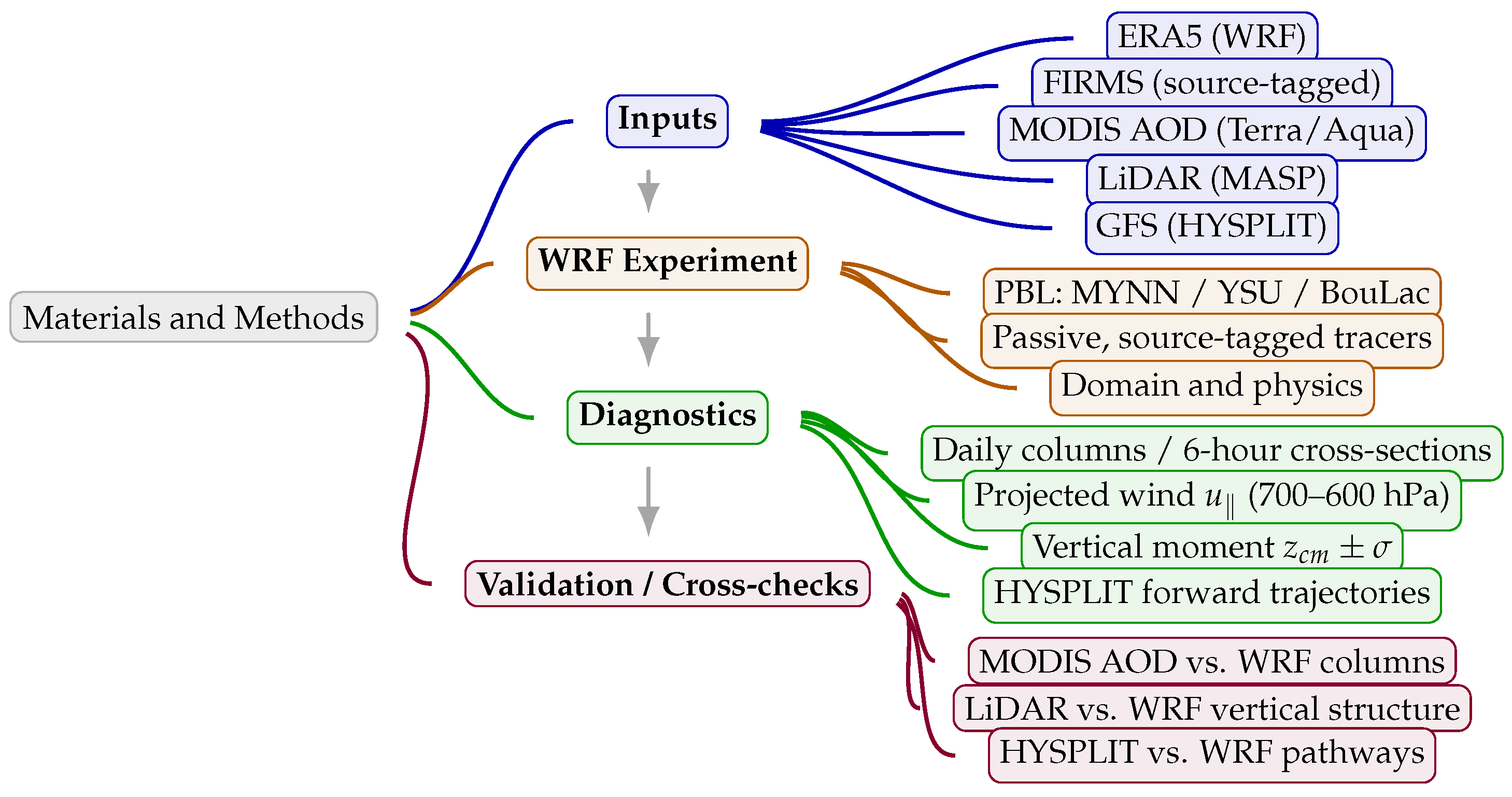

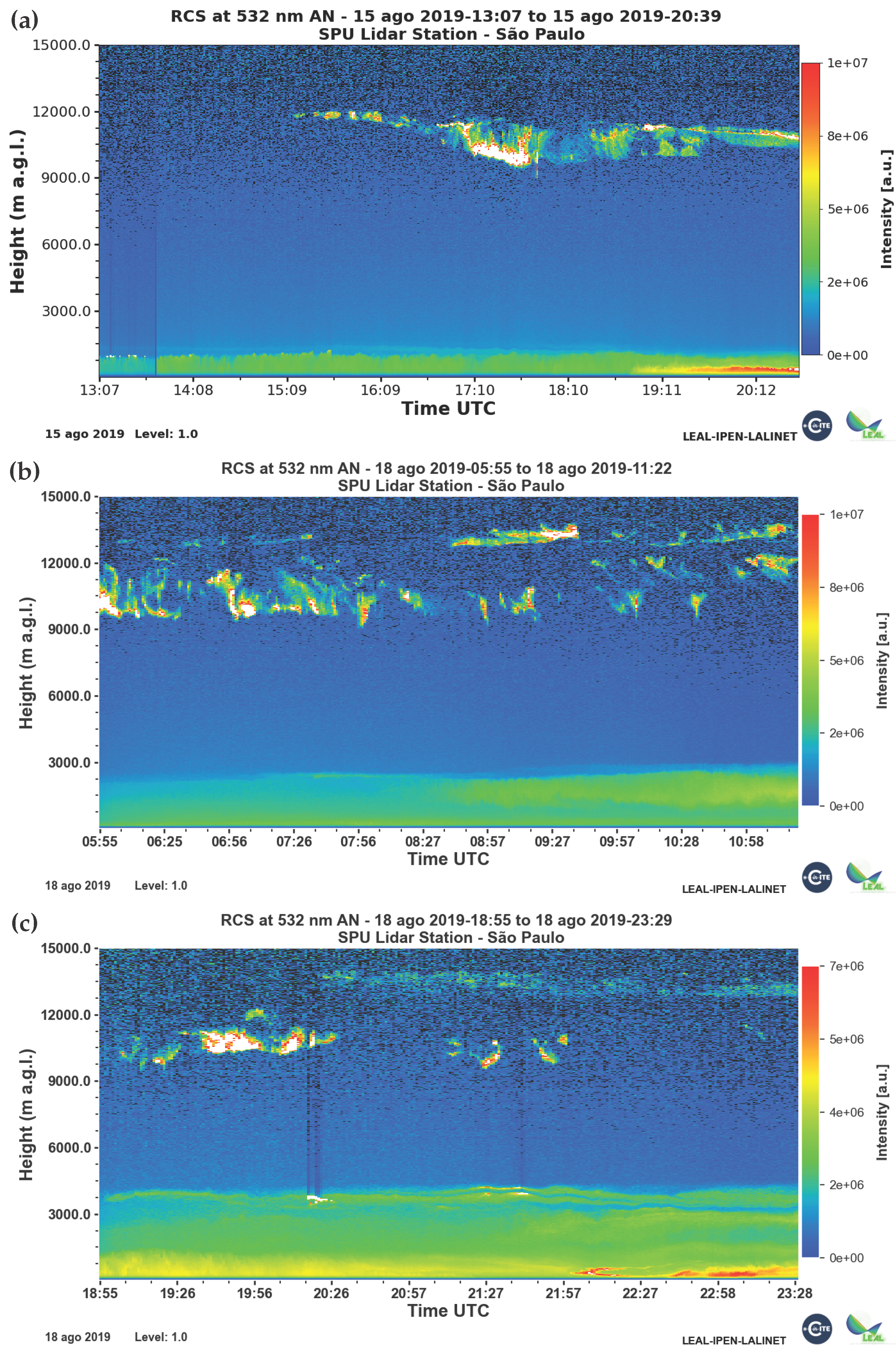
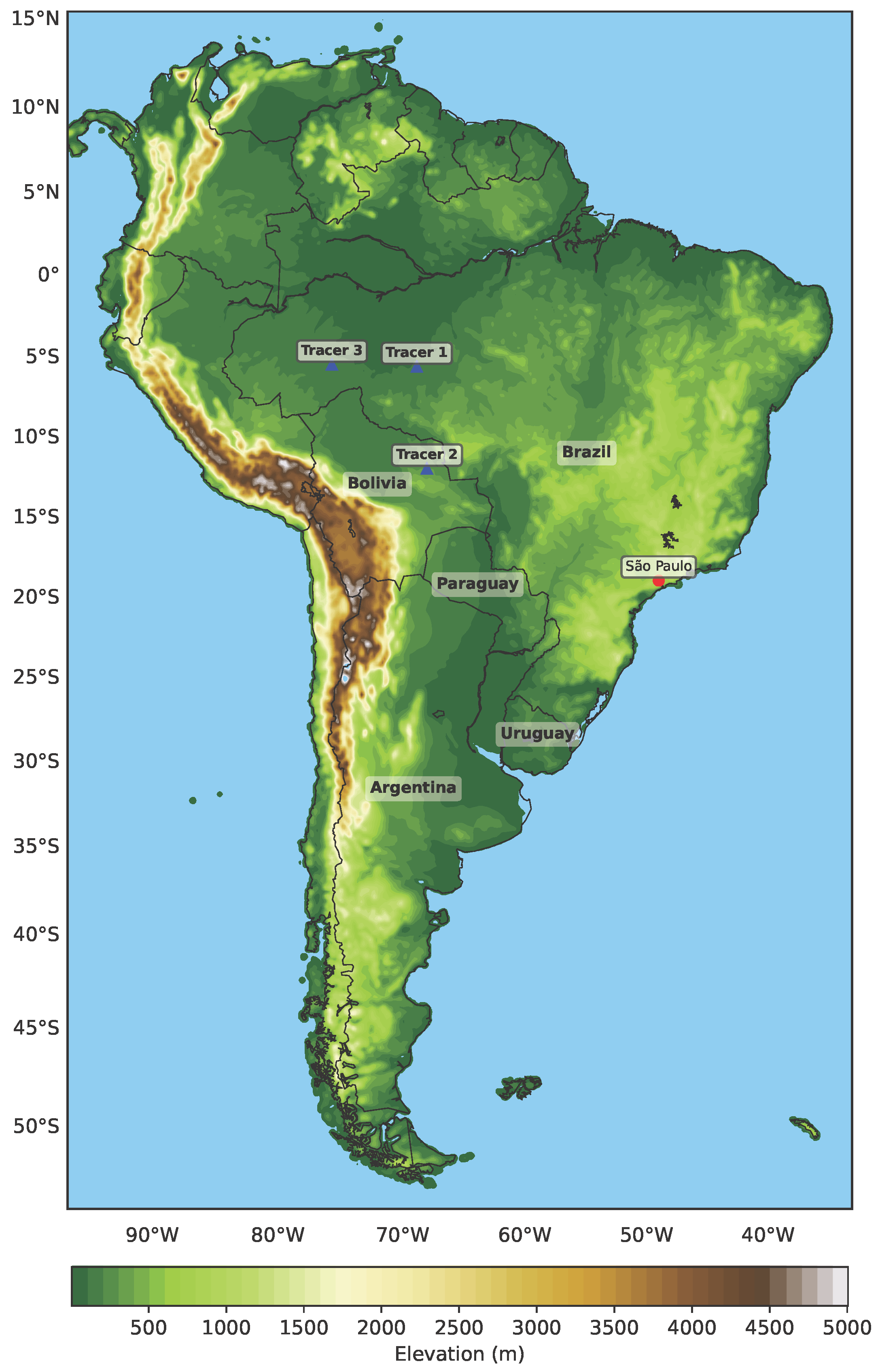
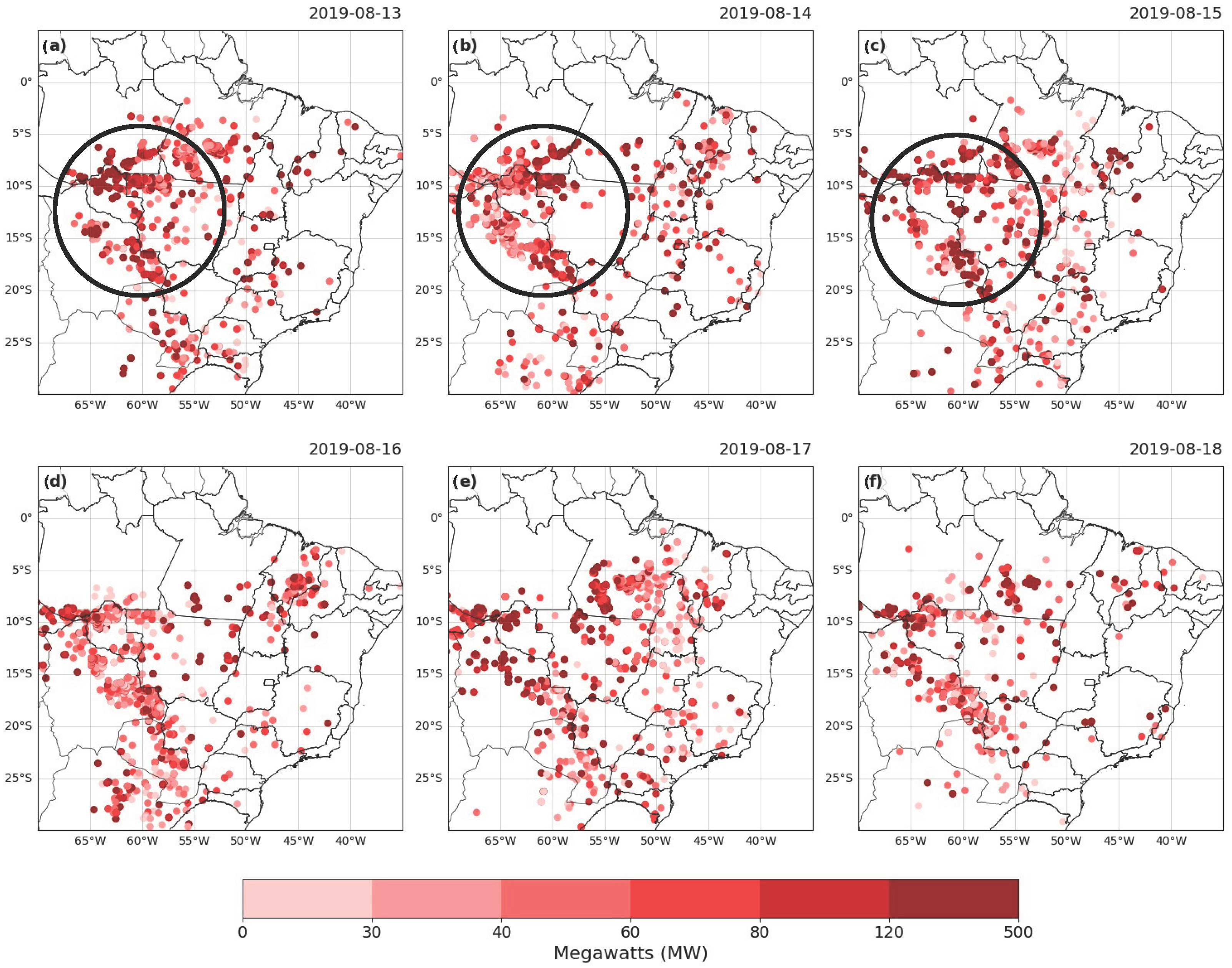
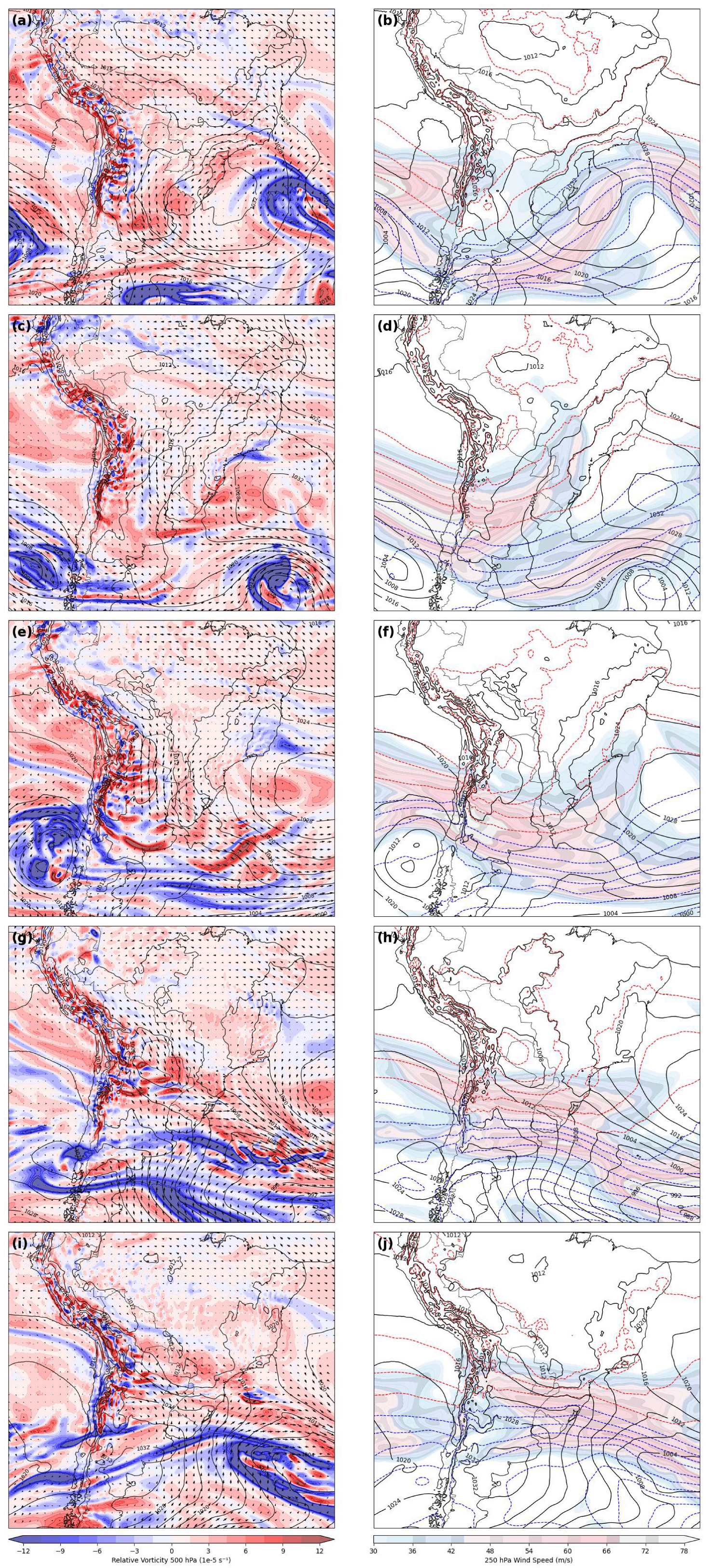
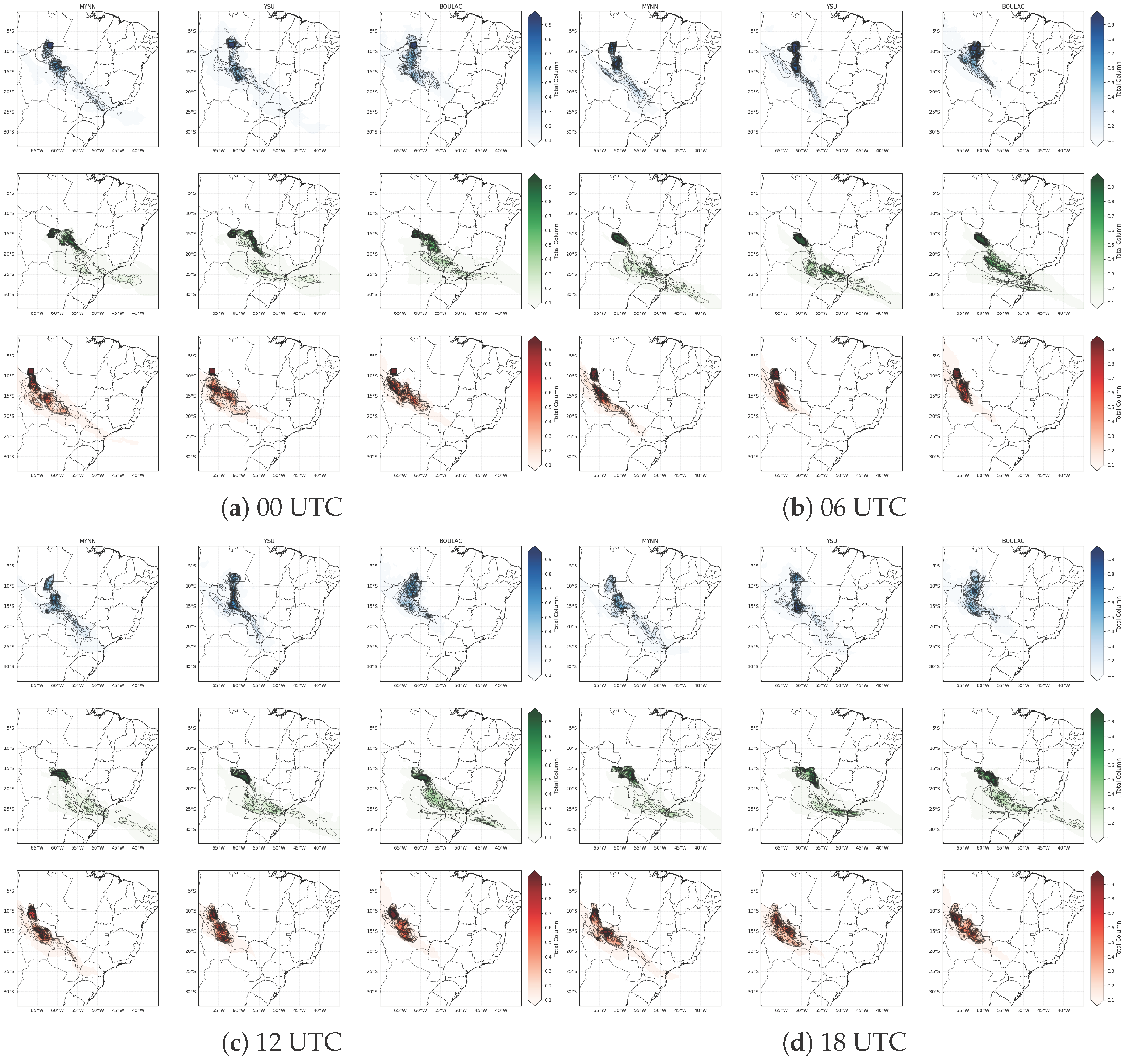

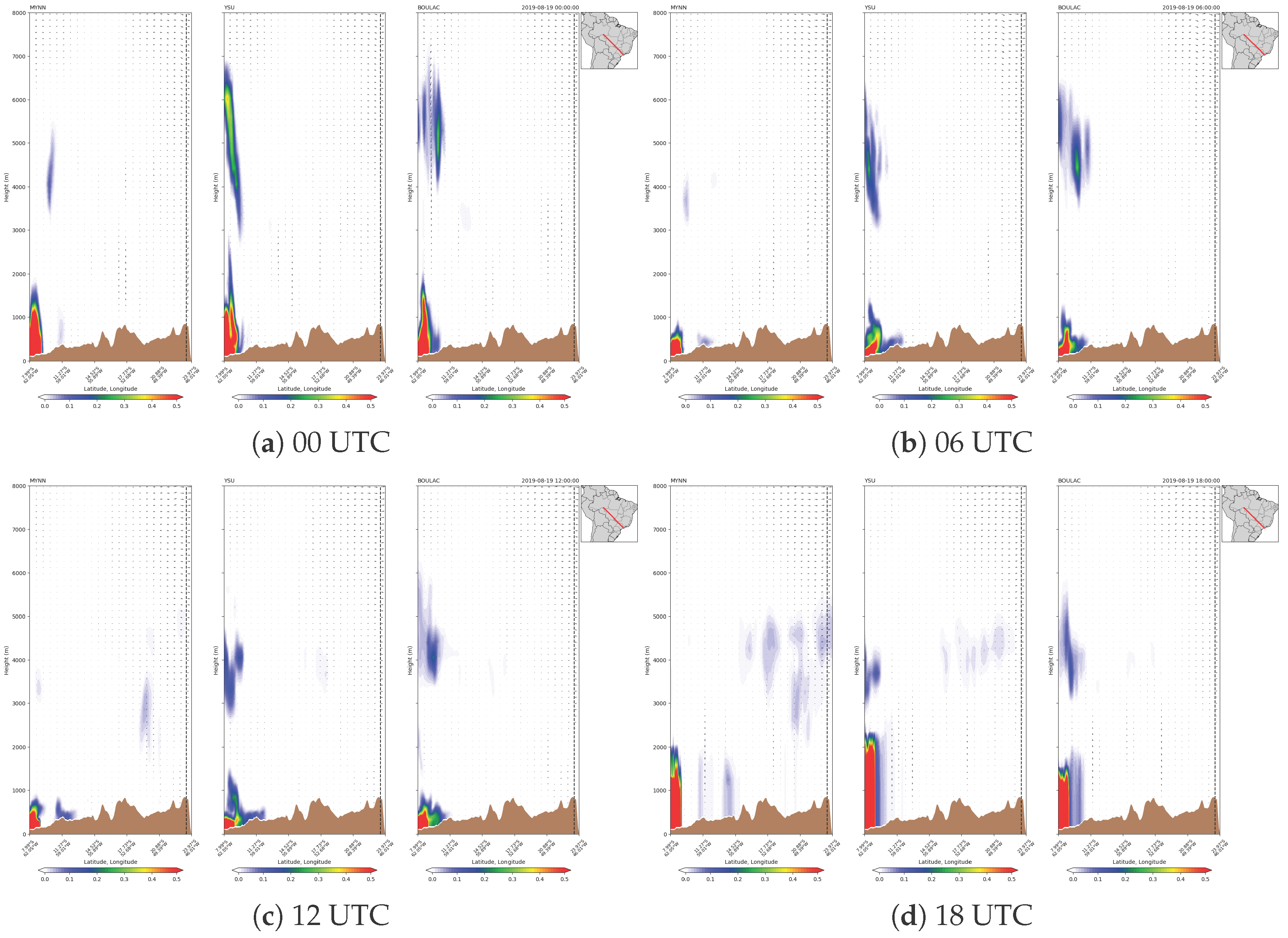

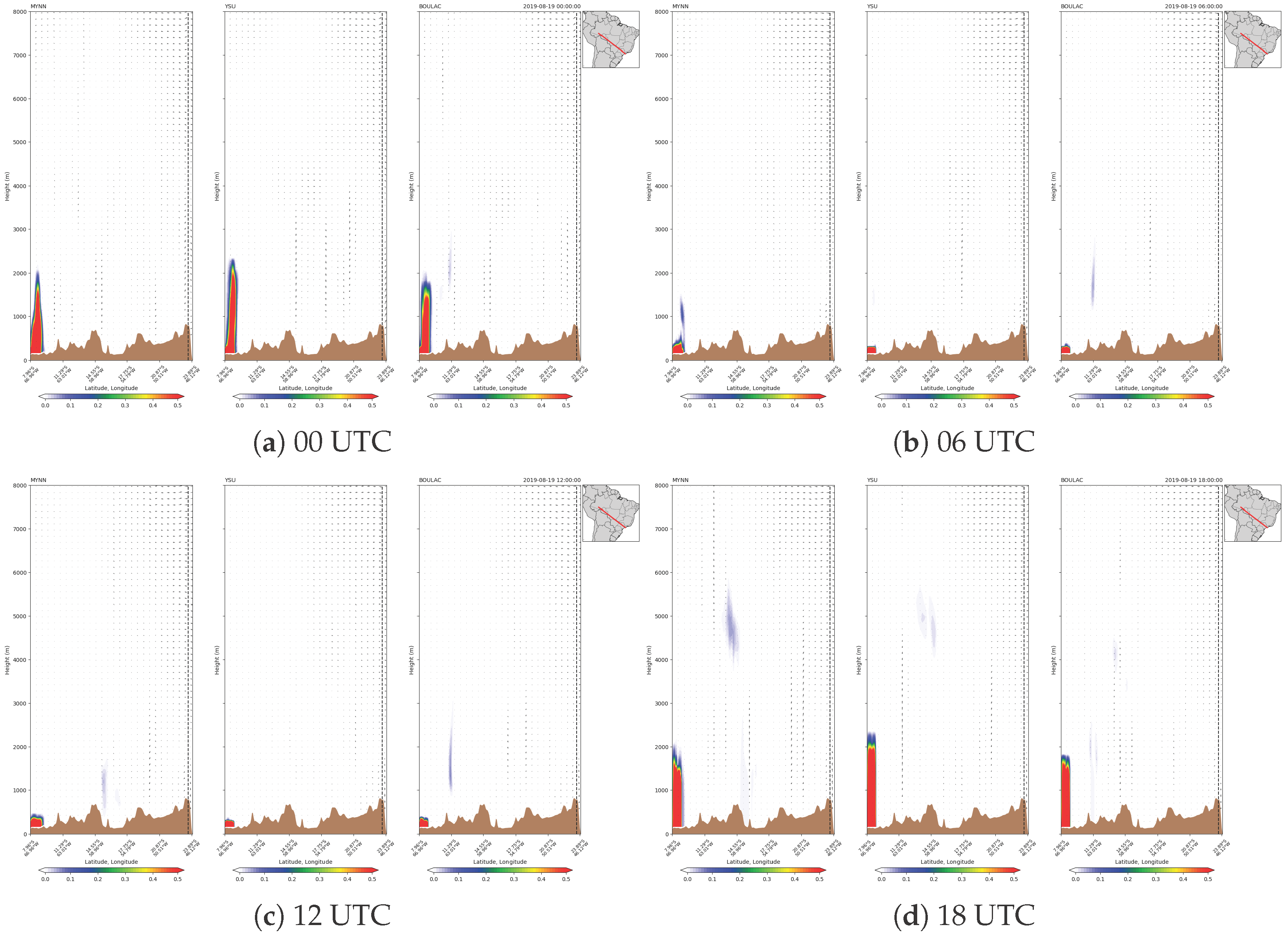

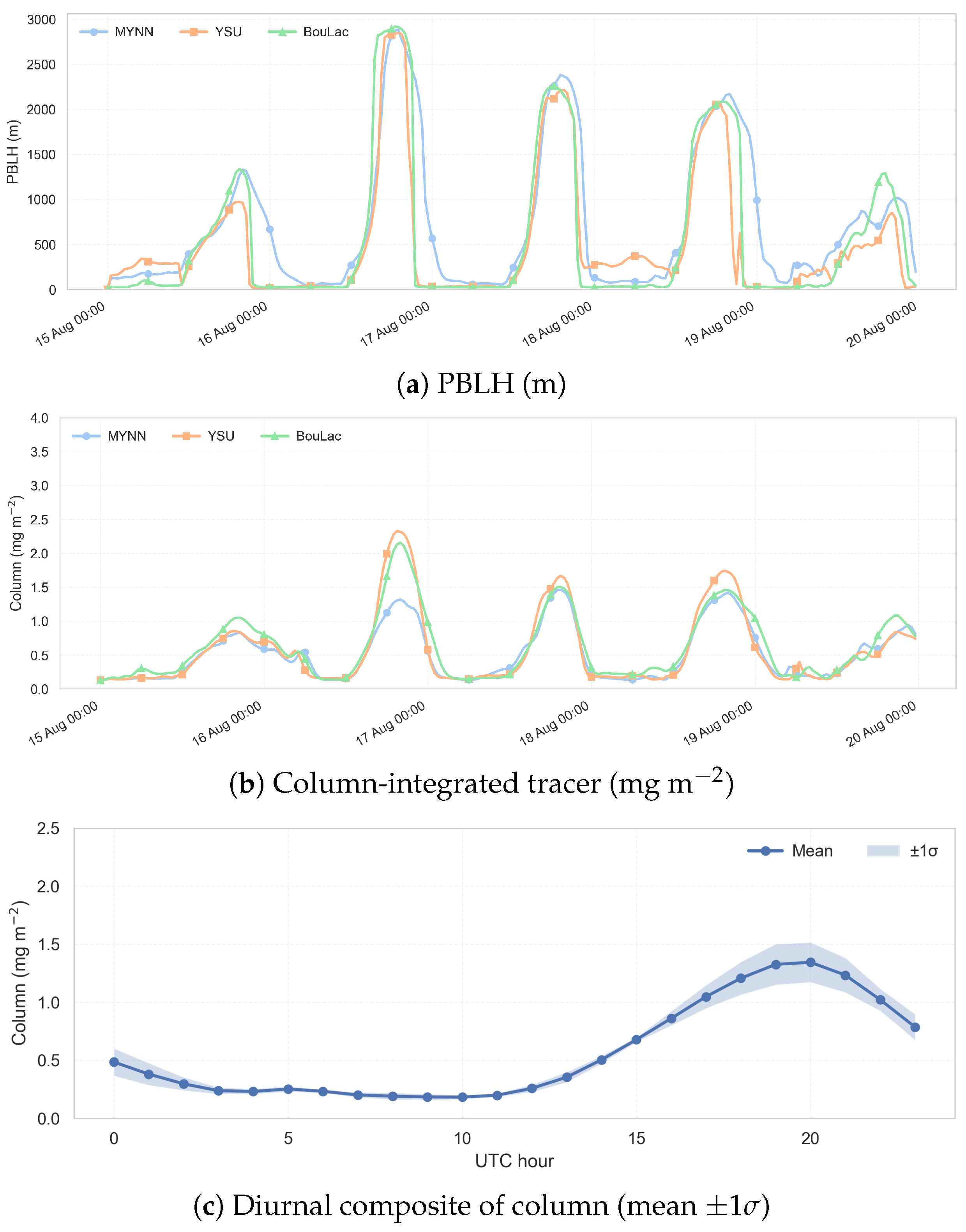
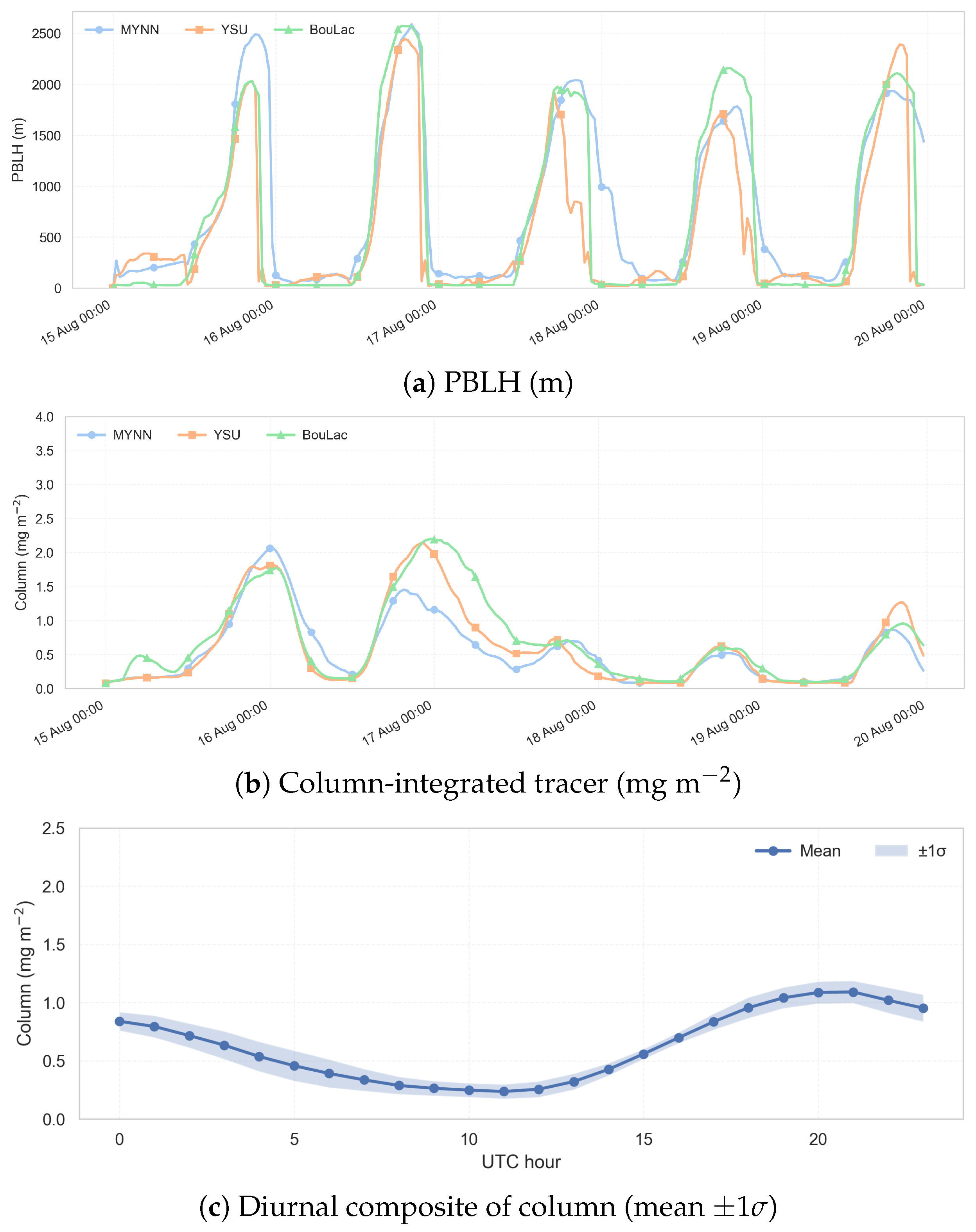

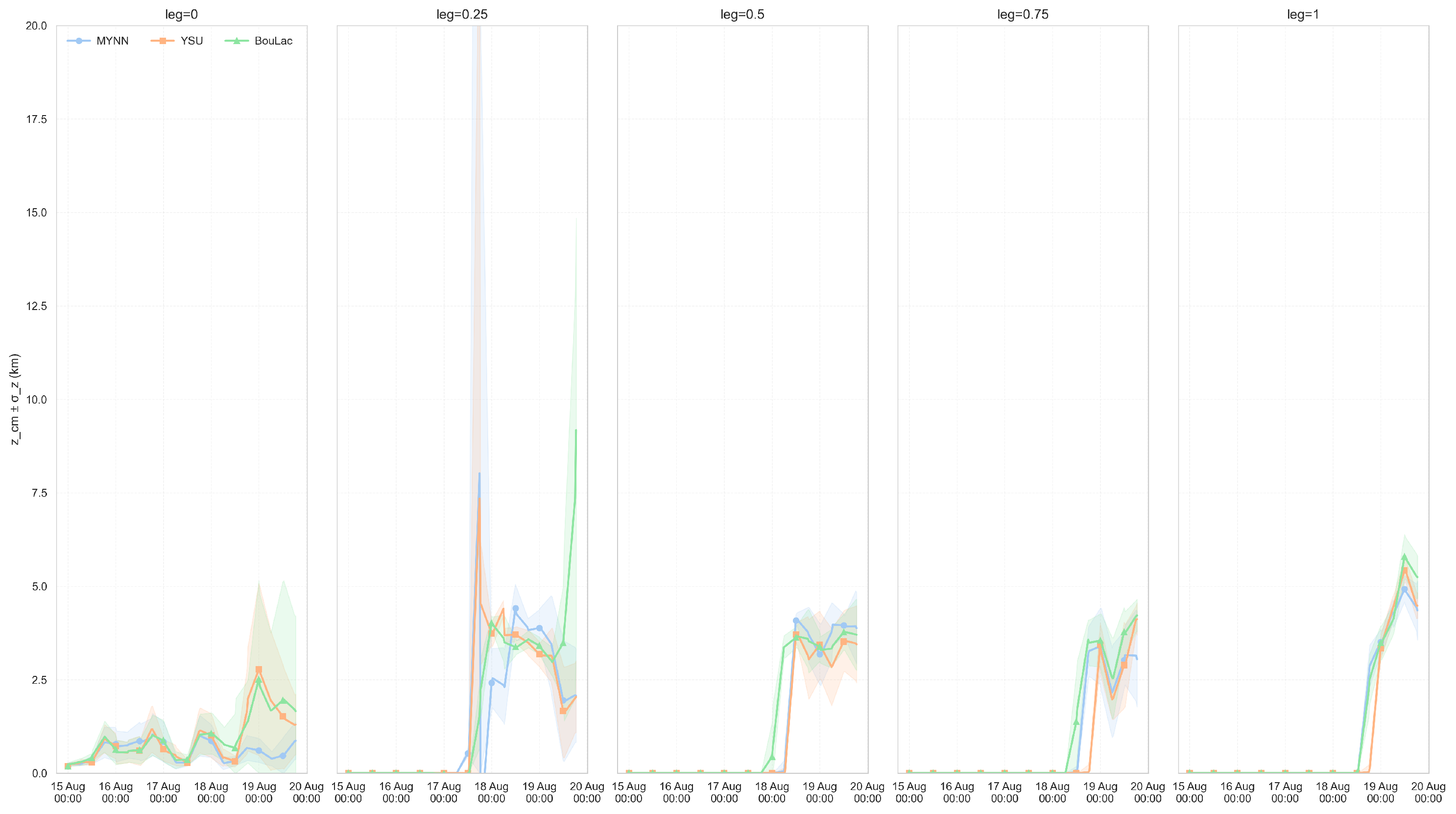

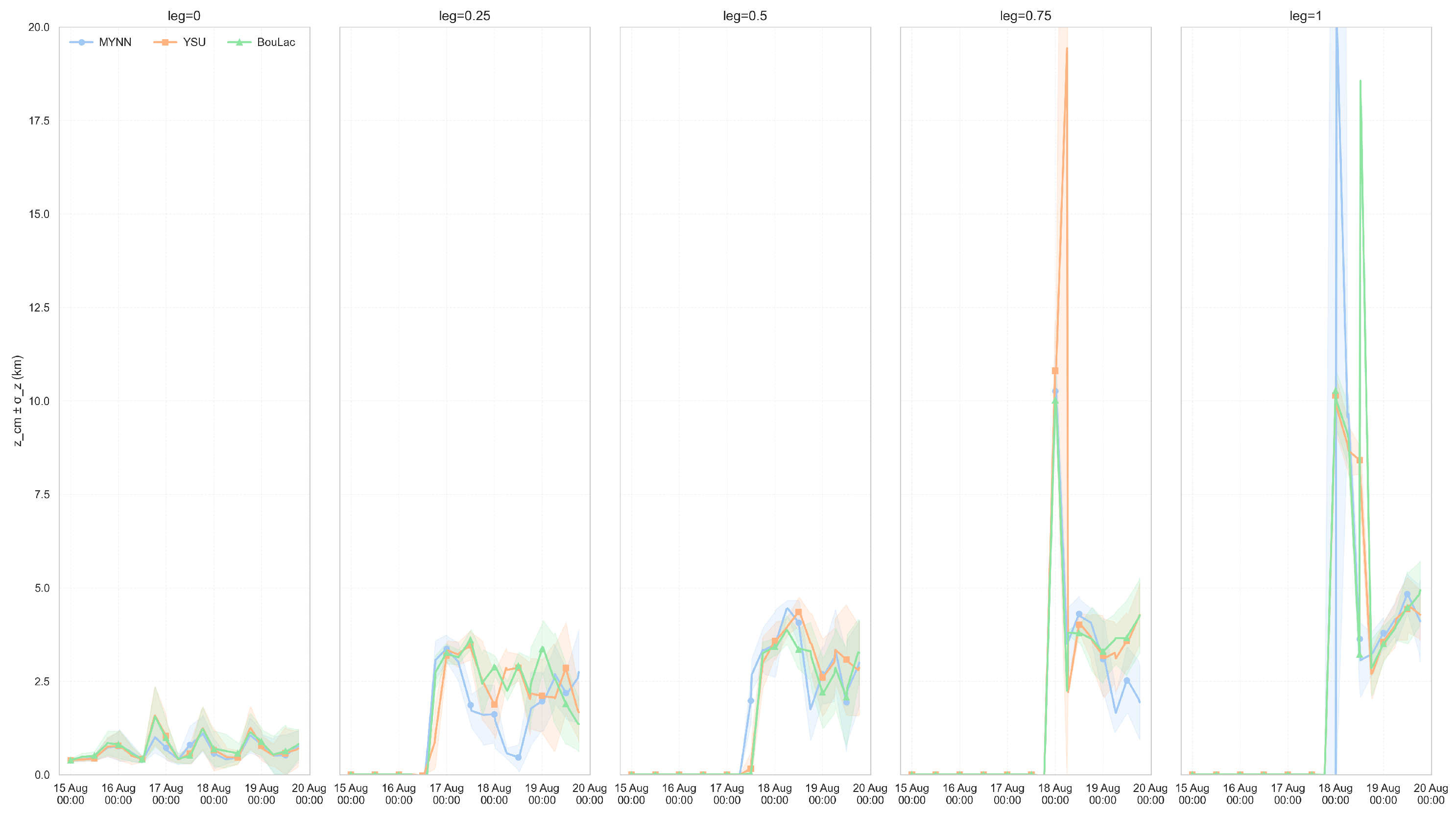
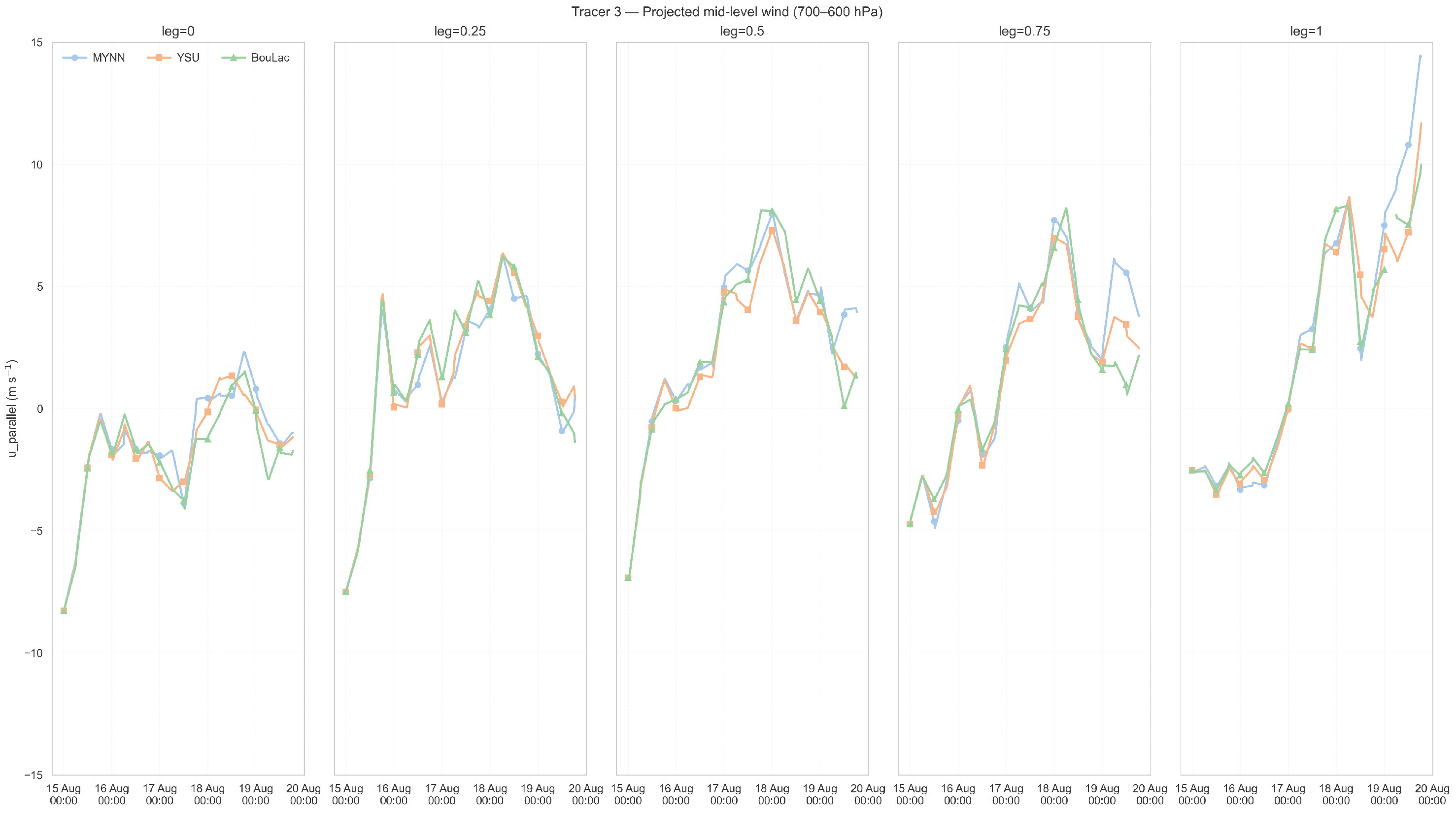

| Options | Name | Reference |
|---|---|---|
| Radiation | RRTMG | [31] |
| Surface | WRF Revised | [32] |
| Cumulus | Grell-Freitas | [33] |
| Microphysics | WSM6 | [34] |
| Tracer | Latitude (°) | Longitude (°) |
|---|---|---|
| tr17_t1 | −8.851 | −61.580 |
| tr17_t2 | −15.372 | −61.617 |
| tr17_t3 | −8.096 | −66.981 |
Disclaimer/Publisher’s Note: The statements, opinions and data contained in all publications are solely those of the individual author(s) and contributor(s) and not of MDPI and/or the editor(s). MDPI and/or the editor(s) disclaim responsibility for any injury to people or property resulting from any ideas, methods, instructions or products referred to in the content. |
© 2025 by the authors. Licensee MDPI, Basel, Switzerland. This article is an open access article distributed under the terms and conditions of the Creative Commons Attribution (CC BY) license (https://creativecommons.org/licenses/by/4.0/).
Share and Cite
de Bem, D.L.; Anabor, V.; Pinheiro, D.K.; Steffenel, L.A.; Bencherif, H.; Bittencourt, G.D.; Landulfo, E.; Rizza, U. WRF Simulations of Passive Tracer Transport from Biomass Burning in South America: Sensitivity to PBL Schemes. Remote Sens. 2025, 17, 3483. https://doi.org/10.3390/rs17203483
de Bem DL, Anabor V, Pinheiro DK, Steffenel LA, Bencherif H, Bittencourt GD, Landulfo E, Rizza U. WRF Simulations of Passive Tracer Transport from Biomass Burning in South America: Sensitivity to PBL Schemes. Remote Sensing. 2025; 17(20):3483. https://doi.org/10.3390/rs17203483
Chicago/Turabian Stylede Bem, Douglas Lima, Vagner Anabor, Damaris Kirsch Pinheiro, Luiz Angelo Steffenel, Hassan Bencherif, Gabriela Dornelles Bittencourt, Eduardo Landulfo, and Umberto Rizza. 2025. "WRF Simulations of Passive Tracer Transport from Biomass Burning in South America: Sensitivity to PBL Schemes" Remote Sensing 17, no. 20: 3483. https://doi.org/10.3390/rs17203483
APA Stylede Bem, D. L., Anabor, V., Pinheiro, D. K., Steffenel, L. A., Bencherif, H., Bittencourt, G. D., Landulfo, E., & Rizza, U. (2025). WRF Simulations of Passive Tracer Transport from Biomass Burning in South America: Sensitivity to PBL Schemes. Remote Sensing, 17(20), 3483. https://doi.org/10.3390/rs17203483









